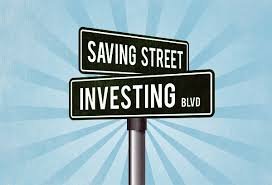
Understanding the difference between saving vs investing is key to managing your money wisely. Both are essential for financial health—but they serve very different purposes. Let’s break it down in simple terms.
What Is Saving?
Saving is putting money aside in a safe, easily accessible place like a bank savings account. It’s typically used for short-term needs or emergencies.
Features of Saving:
- Low risk
- Low returns
- High liquidity (easy access)
- Ideal for emergency funds or short-term goals
What Is Investing?
Investing means putting money into assets like stocks, mutual funds, or real estate to grow your wealth over time. It’s better suited for long-term financial goals.
Features of Investing:
- Higher risk
- Potential for higher returns
- Less liquid (not instantly accessible)
- Ideal for retirement, education, or wealth building
Saving vs Investing: Key Differences
| Feature | Saving | Investing |
|---|---|---|
| Risk | Very low | Moderate to high |
| Returns | Low (1–4% annually) | Higher (6–12% or more annually) |
| Purpose | Short-term needs/emergencies | Long-term growth/goals |
| Accessibility | Immediate | May take time to access |